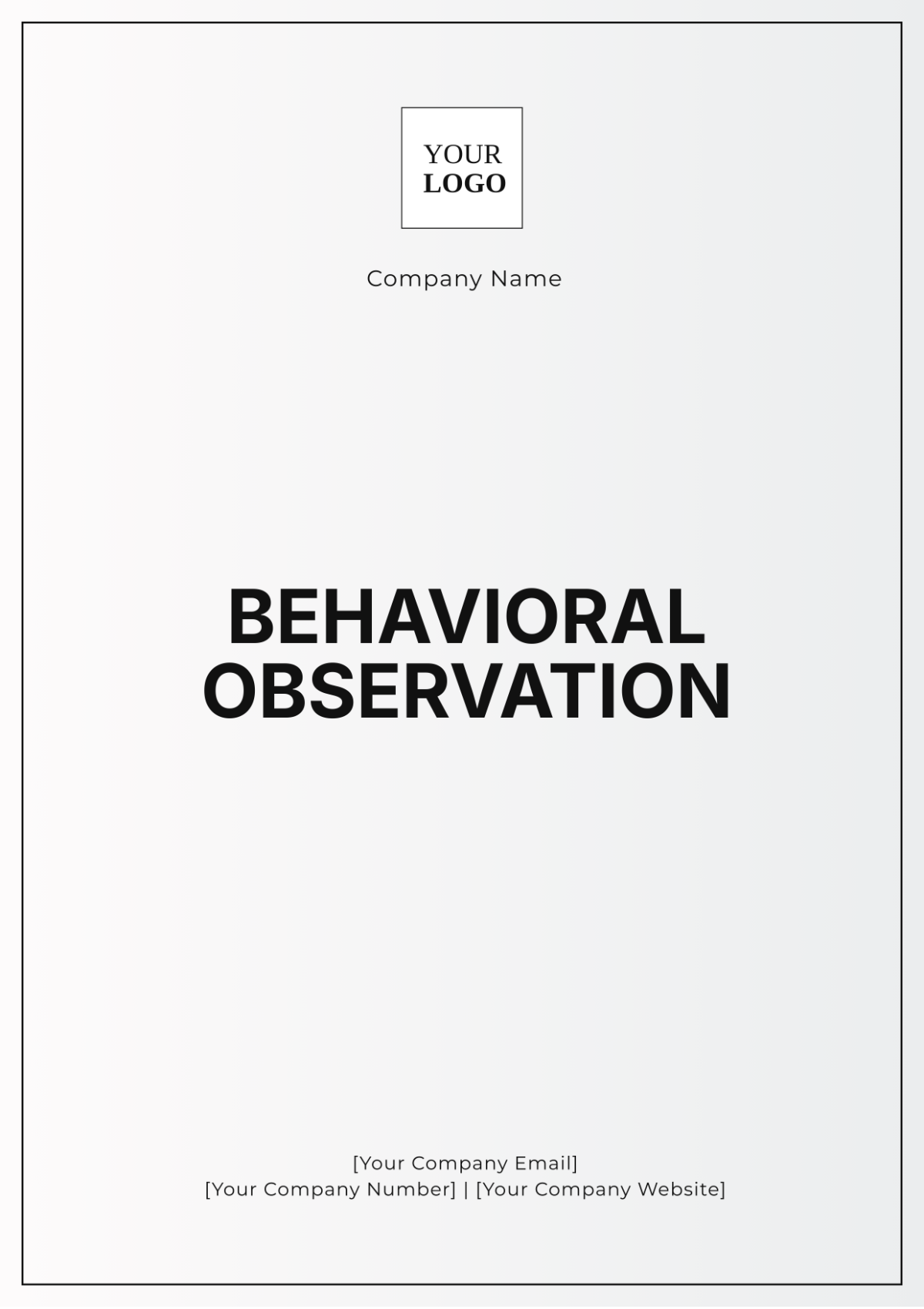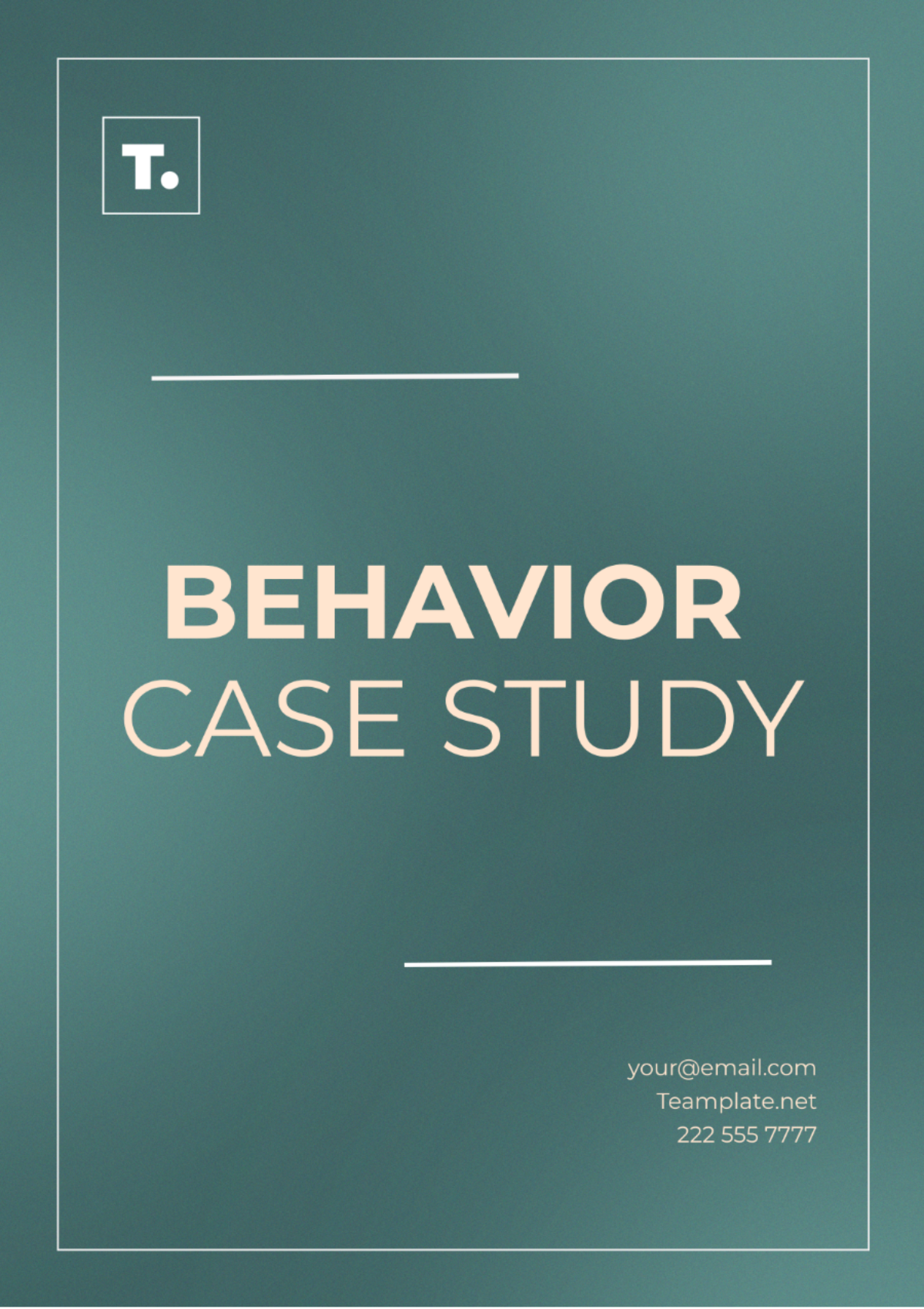Behavior Case Study
I. Patient Information:
Name: [Patient Name]
Age: [Age]
Gender: [Gender]
Occupation: [Occupation]
II. Presenting Problem:
[Patient Name] was referred to the psychology department due to concerns regarding his increasingly erratic behavior at work and home. His supervisor reported a decline in his performance, citing frequent absences, missed deadlines, and conflicts with colleagues. Additionally, [Patient Name]'s spouse expressed worries about his emotional volatility and withdrawal from family activities.
III. Background Information:
[Patient Name] has been employed as a software engineer at a prominent tech company for the past seven years. He is described as intelligent and diligent, consistently receiving positive performance evaluations until recently. [Patient Name]' is married with two children, ages 8 and 10. He has no history of mental health issues or substance abuse.
IV. Description of Behavior:
In the workplace, [Patient Name]'s has been observed displaying signs of irritability, becoming defensive when receiving feedback, and avoiding interactions with coworkers. He often arrives late and leaves early, claiming to be overwhelmed with workload despite colleagues reporting otherwise. His productivity has significantly decreased, and he frequently procrastinates on assigned tasks.
At home, [Patient Name]'s behavior is characterized by mood swings, ranging from periods of intense agitation to prolonged periods of withdrawal. He has been increasingly isolating himself from family activities, preferring to spend hours alone in his home office. His spouse notes that [Patient Name]'s appears restless and unable to relax even during leisure time, frequently checking work emails or engaging in tasks unrelated to work.
V. Triggers:
Several potential triggers for [Patient Name]'s behavior have been identified:
Increased workload and pressure at work.
Recent restructuring within the company leading to job insecurity.
Financial strain due to unexpected expenses.
Conflict with a colleague over a project assignment.
Difficulty balancing work and family responsibilities.
VI. Underlying Factors:
Work-related Stress: [Patient Name]'s profession in the tech industry is known for its demanding workload and high-pressure environment. Recent changes within the company may have heightened his anxiety about job security and performance expectations.
Perfectionism: [Patient Name]'s has a history of setting high standards for himself and experiencing distress when unable to meet them. This perfectionistic tendency may contribute to his fear of failure and reluctance to seek help or delegate tasks.
Poor Coping Mechanisms: Instead of seeking support from colleagues or family members,[Patient Name]'s resorts to avoidance and withdrawal as coping mechanisms when faced with stressors.
Communication Difficulties: [Patient Name]'s struggles to express his emotions and communicate effectively with others, leading to misunderstandings and conflicts both at work and home.
VII. Diagnostic Impressions:
Based on the information gathered, [Placeholder] presents with symptoms consistent with Adjustment Disorder with Mixed Anxiety and Depressed Mood. His behavior reflects maladaptive coping strategies in response to significant life stressors, particularly in the domains of work and family.
VIII. Treatment Recommendations:
Individual Therapy: [Patient Name]'s would benefit from cognitive-behavioral therapy (CBT) to address maladaptive thought patterns and develop healthier coping strategies for managing stress.
Stress Management Techniques: Introducing relaxation exercises, mindfulness techniques, and time-management skills can help [Patient Name]'s better regulate his emotions and reduce work-related stress.
Workplace Support: Collaboration with [Patient Name]'s employer to implement reasonable accommodations, such as flexible work hours or reduced workload temporarily, may alleviate some of the pressure he is experiencing.
Family Therapy: Involving [Patient Name]'s spouse and children in therapy sessions can facilitate communication, improve family dynamics, and provide support for both [Placeholder] and his family members.
IX. Follow-Up Plan:
Regular follow-up sessions will be scheduled to monitor [Patient Name]'s progress and adjust treatment interventions as needed. Collaboration with [Patient Name]'s employer and family members will be essential in ensuring a comprehensive and holistic approach to his recovery.
X. Conclusion:
[Patient Name]'s behavior reflects a complex interplay of work-related stressors, maladaptive coping mechanisms, and interpersonal difficulties. By addressing underlying factors and implementing targeted interventions, there is potential for significant improvement in his functioning and overall well-being.
Prepared by:
Dr. [Your Name]
Contact Details:
[Your Company Email]
[Your Company Number]
[Your Company Name]







